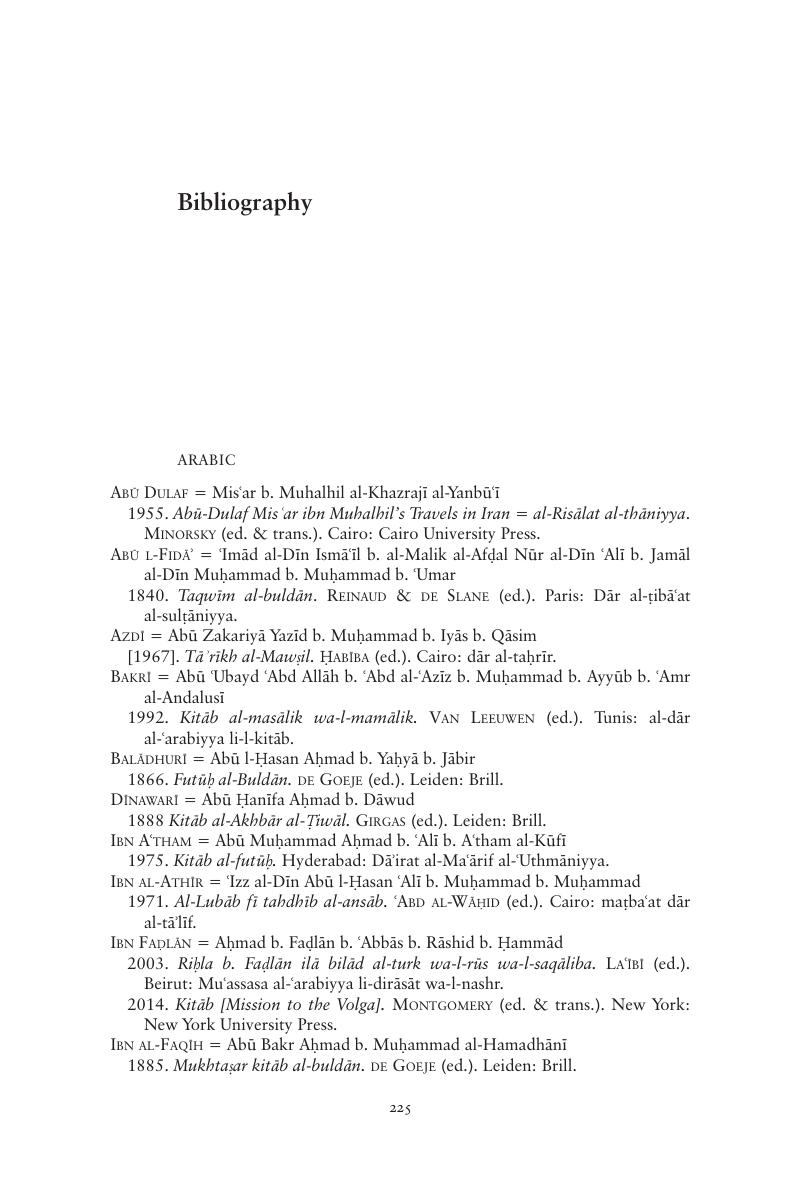 Non-Muslim Provinces under Early Islam
Non-Muslim Provinces under Early Islam Book contents
- Frontmatter
- Dedication
- Contents
- List of Illustrations
- Acknowledgments
- Situating Places, People, and Dates
- 1 Non-Persian Provinces of Iran, Non-Muslim Provinces of Islam: An Introduction to the Umayyad and ʿAbbāsid North
- 2 Whence the Umayyad North?: Byzantine, Sasanian, and Caliphal Administrative Geography of the North
- 3 Lost Greek Kings and Hoodwinked Khazars: Sasanian and Byzantine Legacy in the Construction of Caliphal Frontiers in the North
- 4 The So-Called Marzb ā ns and the Northern Freemen: Local Leadership in the North from Sasanian to Caliphal Rule
- 5 Caliphs, Commanders, and Catholicoi: Mechanisms to Control the North under Byzantine, Sasanian, and Caliphal Rule
- 6 Taxing the Dead and Sealing the Necks of the Living: Sasanian and Caliphal Treaties and Taxation in the North
- 7 Collective Historical Amnesia: The Case for a Parthian Intermezzo
- Bibliography
- Index
- Miscellaneous Endmatter
- References
Bibliography
Published online by Cambridge University Press: 08 September 2017
- Frontmatter
- Dedication
- Contents
- List of Illustrations
- Acknowledgments
- Situating Places, People, and Dates
- 1 Non-Persian Provinces of Iran, Non-Muslim Provinces of Islam: An Introduction to the Umayyad and ʿAbbāsid North
- 2 Whence the Umayyad North?: Byzantine, Sasanian, and Caliphal Administrative Geography of the North
- 3 Lost Greek Kings and Hoodwinked Khazars: Sasanian and Byzantine Legacy in the Construction of Caliphal Frontiers in the North
- 4 The So-Called Marzb ā ns and the Northern Freemen: Local Leadership in the North from Sasanian to Caliphal Rule
- 5 Caliphs, Commanders, and Catholicoi: Mechanisms to Control the North under Byzantine, Sasanian, and Caliphal Rule
- 6 Taxing the Dead and Sealing the Necks of the Living: Sasanian and Caliphal Treaties and Taxation in the North
- 7 Collective Historical Amnesia: The Case for a Parthian Intermezzo
- Bibliography
- Index
- Miscellaneous Endmatter
- References
Summary

- Type
- Chapter
- Information
- Non-Muslim Provinces under Early IslamIslamic Rule and Iranian Legitimacy in Armenia and Caucasian Albania, pp. 225 - 252Publisher: Cambridge University PressPrint publication year: 2017
